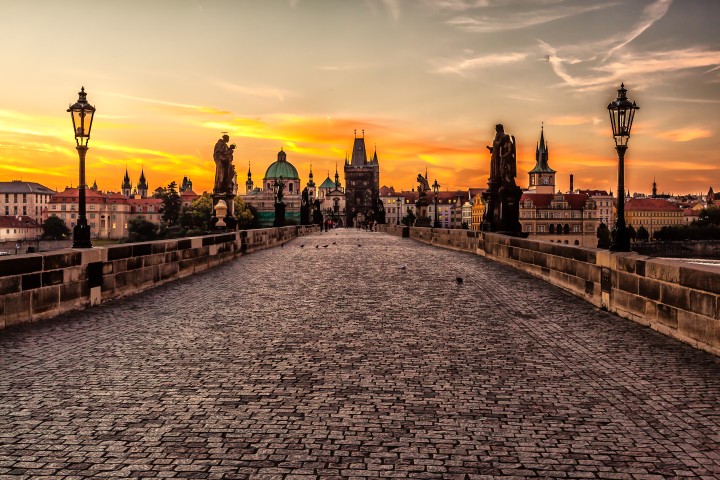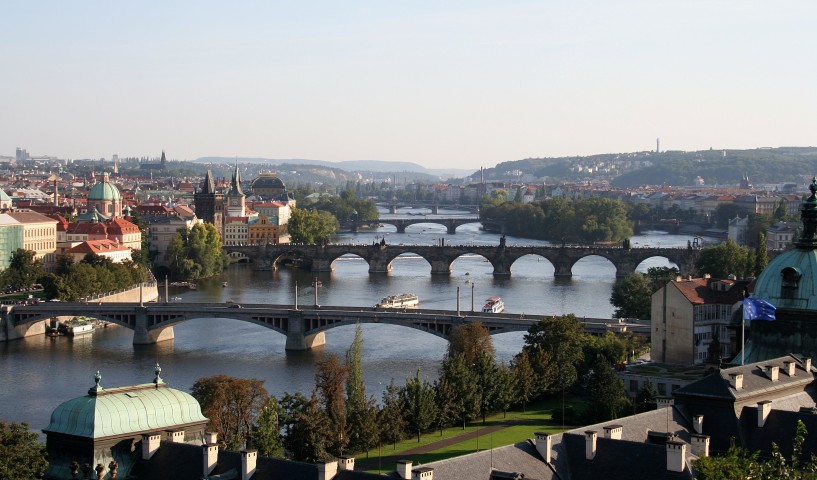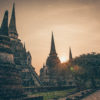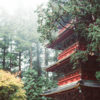Prague is a beautiful, sensuous city. This stunning capital of the Czech Republic has become increasingly popular with tourists, and now easily rates among Europe’s most romantic city-break destinations. Its architecture is remarkably diverse — spanning most of the major architectural movements of the last several centuries, from Renaissance to Baroque to Gothic to Art Deco — and much of it was miraculously undamaged by World War II. Thus, intriguing architectural details and façades can be found on every corner, which makes strolling through Prague’s winding, cobbled streets wonderfully intoxicating.
The nine dramatic bridges over the River Vltava make walking between Mala Strana (the Lesser Town to the west) and Stare Mesto (the Old Town on the east bank) an easy and enjoyable way to explore this Central European city. And then, of course, when you are ready for a break and want intoxication of a more direct sort, you can join in the Bohemian ritual of beer drinking — and sample some of the world’s finest. Or head out to enjoy some music at any of Prague’s three opera houses or numerous jazz clubs.
The gates to Prague Castle in Hradcany (the hilly district above Mala Strana) have been open since the Velvet Revolution. The castle is more than 1000 years old and it resonates with national identity. It has been occupied by many different foreign powers and an investigation of its enchanting grounds is an essential and informative part of any visit to Prague. The huge St. Vitus’s Cathedral, in one of the castle’s courtyards, is the spiritual centre of Bohemia and its spires loom over the city. Mala Strana, below, is the craftsman’s quarter and contains a strange mix of large baroque palaces, gabled townhouses and smoky cafés. Its windy streets are full of such evocative detail that it is popular for period film shoots.
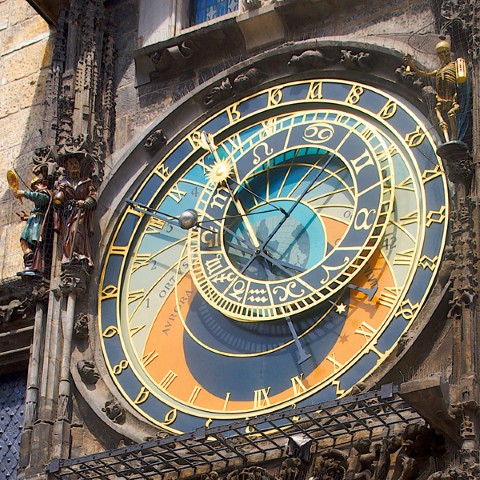
On the other side of the Vltava, Stare Mesto is full of drinking establishments, cinemas and galleries. It’s a very disorienting area — novelist Franz Kafka was one of its most famous residents — but there are certain landmarks to head for, such as the Old Town Square. The square is home to the 500-year-old Astronomical Clock(the figures of the apostles that pop in and out of it on the stroke of each hour are a popular sight with tourists), theOld Town Hall, partly destroyed by the Nazis in 1945, and the lovelyChurch of St. Nicholas.
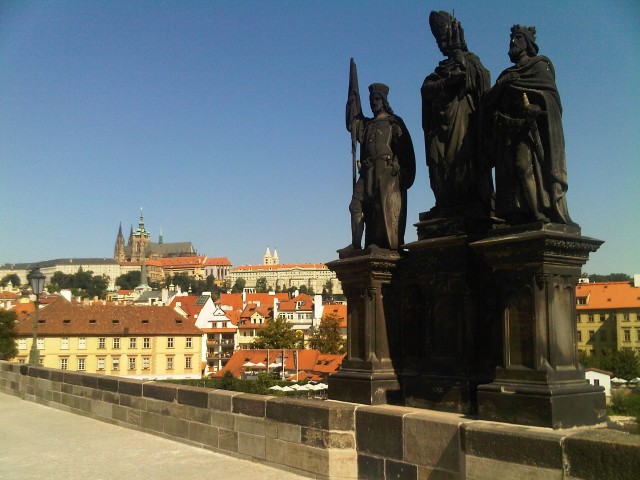
Another rare piece of destruction during World War II was the space created on the Nove Mesto (New Town) bank of the Vltava by the crew of a US bomber mistaking Prague for Dresden. It has since been filled by one of the city’s showpiece structures, the so-called Fred and Ginger Building, designed by Vladimir Milunic and Frank Gehry and named after the famous dancing duo of Fred Astair and Ginger Rogers because it appears almost to be dancing. Milunic was influenced by the cubist architecture of the city. The first and possibly finest example of which is theHouse of the Black Madonna in Stare Mesto. This is worth a visit for the building alone, but it’s also used by the Czech Museum of Fine Arts for an exhibition of Czech cubism and contemporary artists. The best building to visit for orientation in the city, and to see a masterpiece of communist design, is theZizkov TV Tower. This space-age creation resembles a rocket ship and dominates the city skyline; take the lift to its eighth-floor platform for fantastic views.
But some of the best views over Prague are from the famous Charles Bridge — the spot visitors generally remember most after a visit to Prague. Built in the 14th Century and lined on both sides with intriguing black statues, it offers splendid views out over the river and up toward the Castle (especially at night when the castle is floodlit), as well as towards the Mala Strana, the Stare Mesto and the Nove Mesto. Serving as one of the city’s focal points, the bridge always has plenty to amuse, from street performers to students strumming guitars.
The Czechs drink more beer than any other country in the world. And it comes as no surprise after you’ve sampled a couple of national brews. There is much conjecture as to which is the best — Gambrinus, Pilsner Urquell, Kozel, Staropramen and Budvar are the leading contenders. Most pubs only stock one or two types of beer and waiters will continue to bring you your chosen poison once you have ordered your first — until such a time as you call a halt. A beer mat on top of the glass is a cute way to stop yourself falling off that stool.
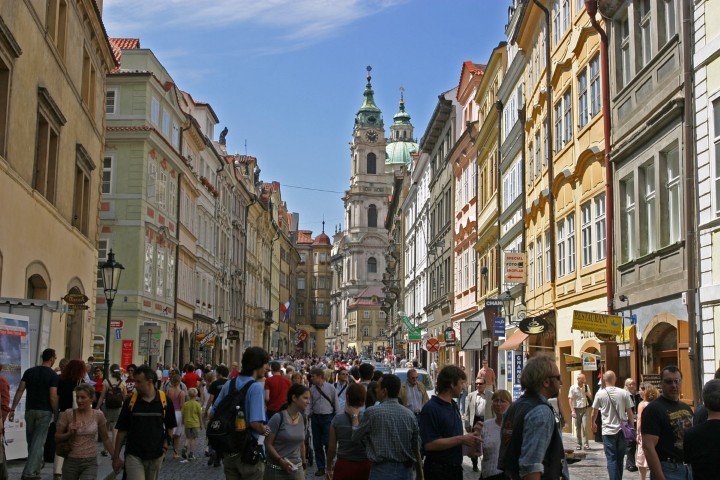
For an authentic slice of Prague pub culture, tryBaracnicka rychta (Mala Strana) or the Radegast Pub (Stare Mesto). U Zlateho tygra (Stare Mesto) was the favoured haunt of Bohumil Hrabal, one of Prague’s finest writers (his novel I Served the King of England is a brilliant accompaniment to any trip to Prague). The bar has become a popular stop-off point for a Pilsner Urquell or two. The Czechs do harder liquor, too. Try Becherovka, a sweet herb liqueur. Or, for the ultimate ‘blasting your brains across the bar’ experience, Absinthe — be very wary, though, of the effects of the wood alcohol it contains.
Luckily, Czech cuisine easily soaks up most alcoholic excesses — meat (aplenty) and dumplings are the favoured option. Sausages, goulash, pork with sauerkraut and game are also popular. For top-of-the-range Czech dining, try the Opera Grill (Stare Mesto) — where you might even bump into a Hollywood star on location. Since 1989 there has been a steady increase in the international cuisine offerings in the city — and the American expat invasion means there are more brunch options in Prague than virtually any city in Europe. One thing that hasn’t changed much, though, is the notorious rudeness of Prague’s waiters.
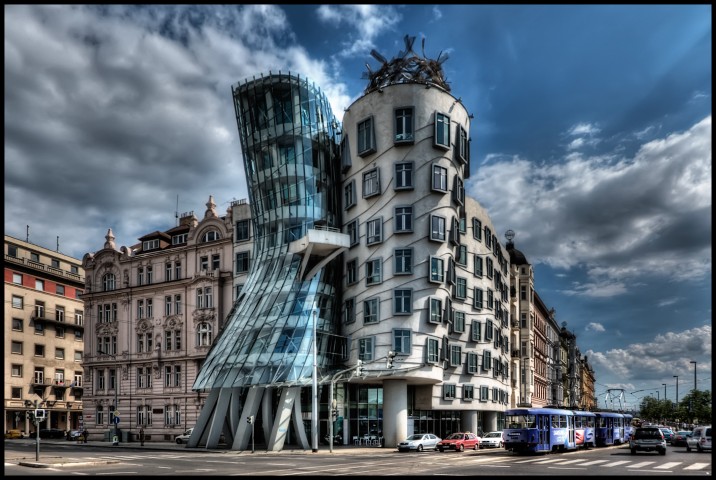
Prague was one of the European Cities of Culture in 2000 and this had a positive effect on its museums. The National Gallery collection of 19th and 20th Century Art is the place to head for the best overview of Czech art. And there are many different, and quirky, museum options to gain an insight into Prague’s past.
Be sure to visit the museum and ancient synagogue of the Jewish quarter also, where the cemetery of tilting tombstones is a beautiful but haunting reminder of the plight of the Jews before and during the war.
Whether you’re a history or culture buff, a romantic, or simply out to have a wild weekend, Prague is simply not to be missed.
- Baracnicka rychta: Traste 23, Mala Strana; 00-420-1-5753-2461; open noon to 11 p.m. daily.
- Radegast Pub: Templova 2, Stare Mesto; 00-420-1-232-8069; open 11 a.m. to midnight daily.
- U Zlateho tygra: Husova 17, Stare Mesto; 00-420-1-2222-1111; open 3 to 11 p.m. daily.
- Opera Grill: Karoliny Svetle 35, Stare Mesto; 00-420-1-2222-0518; dinner served 7 p.m. to 2 a.m. daily.


